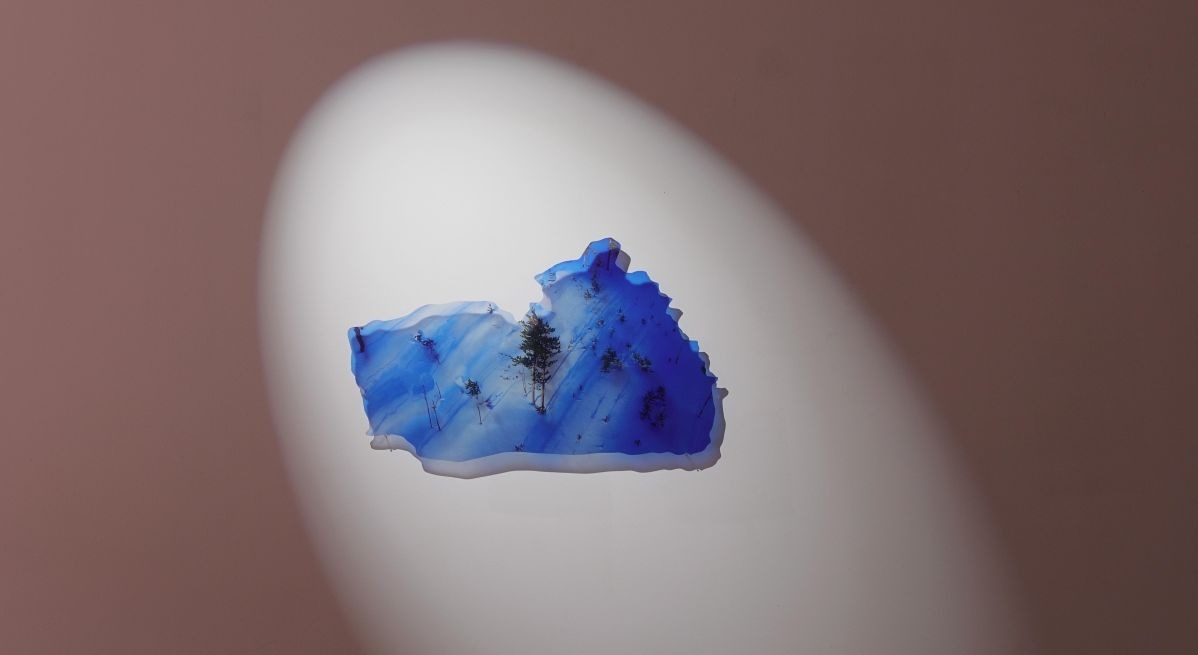
Lullabies for a Planet in Distress
Rosana Lukauskaitė
Review of the exhibition “Arctic Swell” by Kotryna Ūla Kiliulytė in Vilnius
It’s been proposed that the reason we find no evidence of intelligent life beyond our planet isn’t due to the vast distances, but rather that the fleeting span of time in which intelligence exists – before it self-destructs – is too brief for two distinct space-faring cultures to meet. Contemporary concerns, from climate change to fears of nuclear warfare and relentless viral diseases, serve as stark reminders of our own fragility and mortality. Yet, we persistently cling to the hope of rebirth, rejuvenation, spring, and the eternal cycle of renewal.
The exhibition “Arctic Swell” by Kotryna Ūla Kiliulytė, on display at the Prospekto gallery in Vilnius, Lithuania from July 26 to September 2, unfolds as a multi-dimensional experience that mirrors these themes, weaving a narrative of resilience and the constant interplay between the threat of decay and the promise of rebirth. It features a video piece segmented into four distinct chapters, accompanied by still images and a curated publication. This collection dives deep into the convergence of pressing themes: climate change, the act of nurturing as a form of resistance, and the intricate perception of time.
“Arctic Swell” by Kotryna Ūla Kiliulytė at the Prospekto gallery in Vilnius. Exhibition views. Photos: Arturas Valiauga
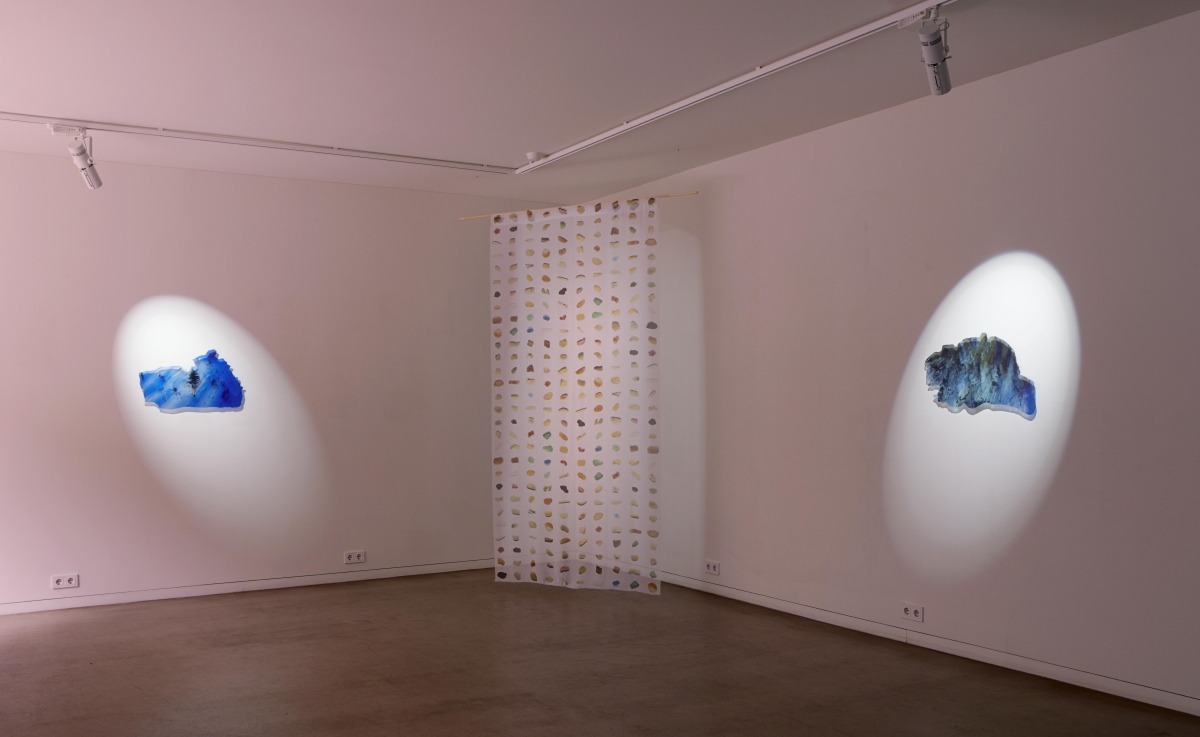

Kiliulytė’s work adeptly intertwines the timelines of human gestation with the irreversible man-made impacts on our planet. Her portrayal underscores the fragility and fragmented nature of existence, presenting it with a unique dual perspective. On one hand, the artist offers a microscopic closeness, delving into the minute details and intricacies of life. Conversely, she also steps back to provide a near-cosmic distance, emphasizing the vastness and interconnectedness of the universe as well as highlighting the sometimes necessary detachment one needs to fully appreciate the bigger picture.
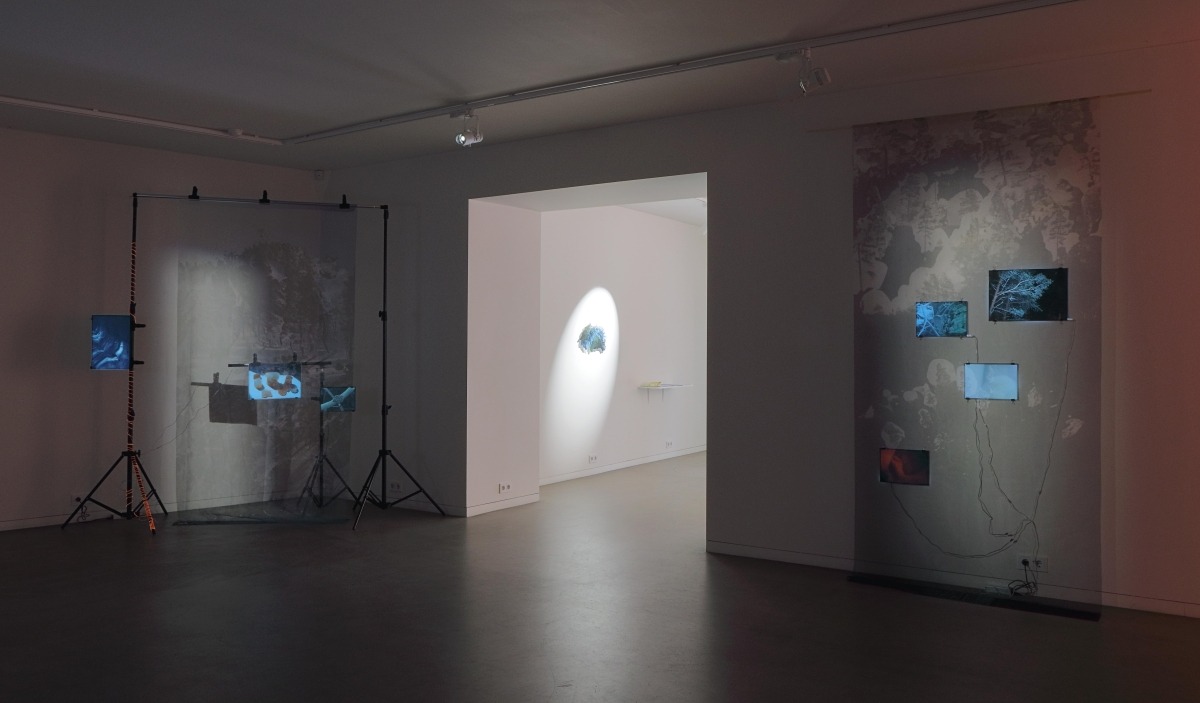

The works resonate with deep ecology, a philosophical approach that views humanity as an integral part of the environment and advocates for a shift from anthropocentrism to ecocentrism. In this discourse, childbearing emerges as the epitome of symbiotic relationships, highlighting the intricate dance between two lives, much like the delicate balance maintained in nature’s own partnerships. The images of Arctic mosses, captured through the precision of an electron microscope, not only underscore this theme but also evoke imagery reminiscent of human physiology. Their delicate structures can strikingly mirror human veins or the ebb and flow of white and red blood cells. This visual parallel reinforces the concept of interconnectedness, reminding us that, despite the vast differences in scale and form, there exists a shared essence and rhythm between all living entities.
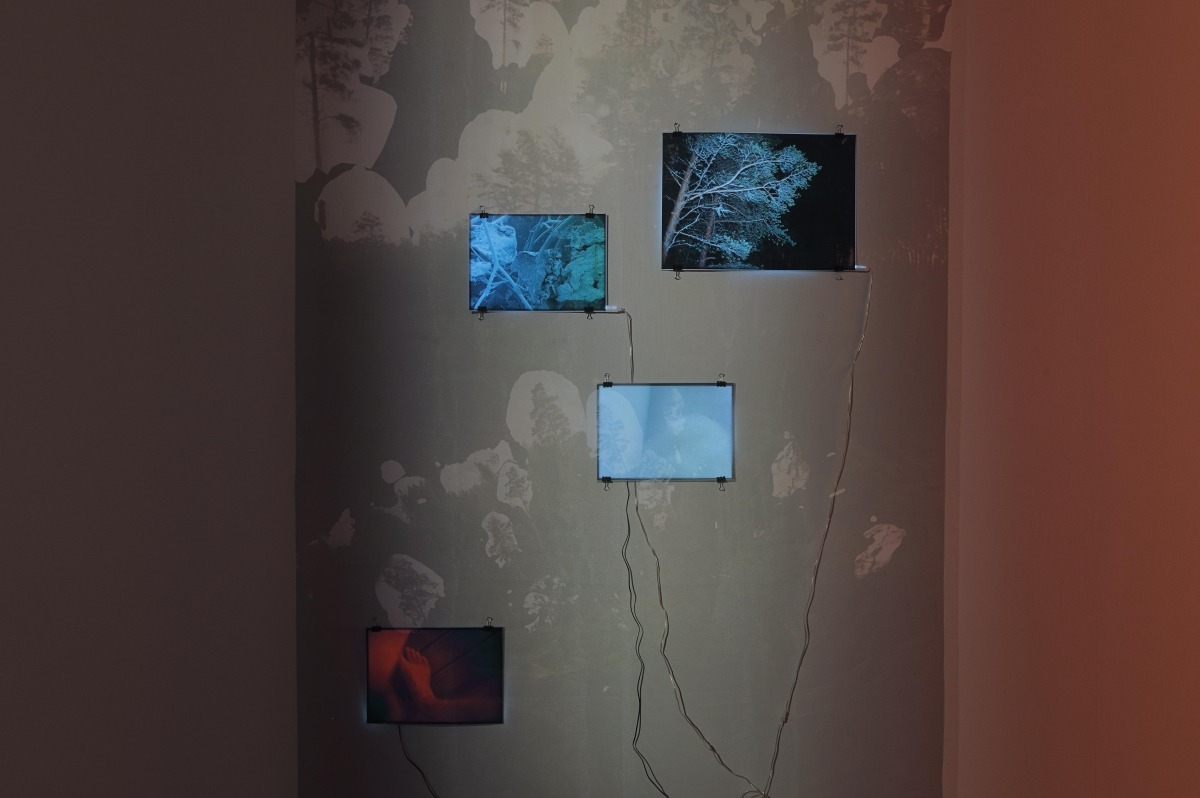

Using a drone, digital landscapes of Northern Finland and Lithuanian forests have been crafted and then printed on fabric draperies and organic glass. Assisted by photogrammetry, these images take on the appearance of 3D objects. In presenting nature in this way, an ‘uncanny valley’ effect is induced – while we feel a sense of recognition toward the landscapes, there’s an unsettling distortion within them. The intention of the artist becomes clear: to urge viewers to traverse beyond the age-old dichotomy of what we deem natural versus unnatural. This concept is reminiscent of Icelandic singer Björk’s approach in recent years. She has seamlessly woven the elements of nature with technological undertones, not just in her music but also through her visual artistry. Particularly in albums such as “Biophilia” and “Vulnicura”, the accompanying music videos and stage designs are a testament to this blend. They skillfully merge organic elements with digital nuances. Through her work, Björk invites listeners and viewers to reflect on the intricate relationship binding humans, technology, and the natural world.
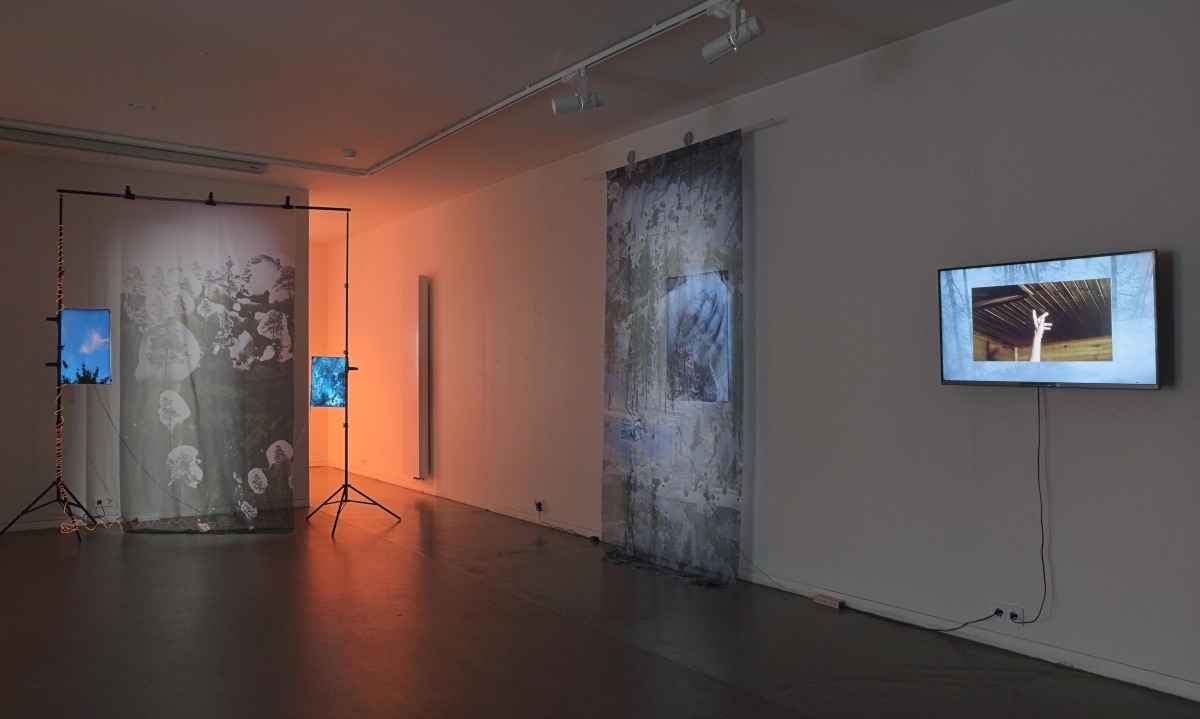


The theme of radical intimacy, symbiosis, and mutual relationships in the exhibition underscores a profound interconnectedness – a quality often overlooked in today’s societal mindset. The artist’s presentation posits that the universe’s elements are intrinsically intertwined, challenging the conventional understanding of boundaries between the self and the “other”. This notion resonates deeply with expectant and new mothers, who grapple with heightened anxieties about the kind of world their offspring will inherit. Their unique physiological experience, akin to hosting another autonomous life form, blurs the lines between individuality and coexistence.
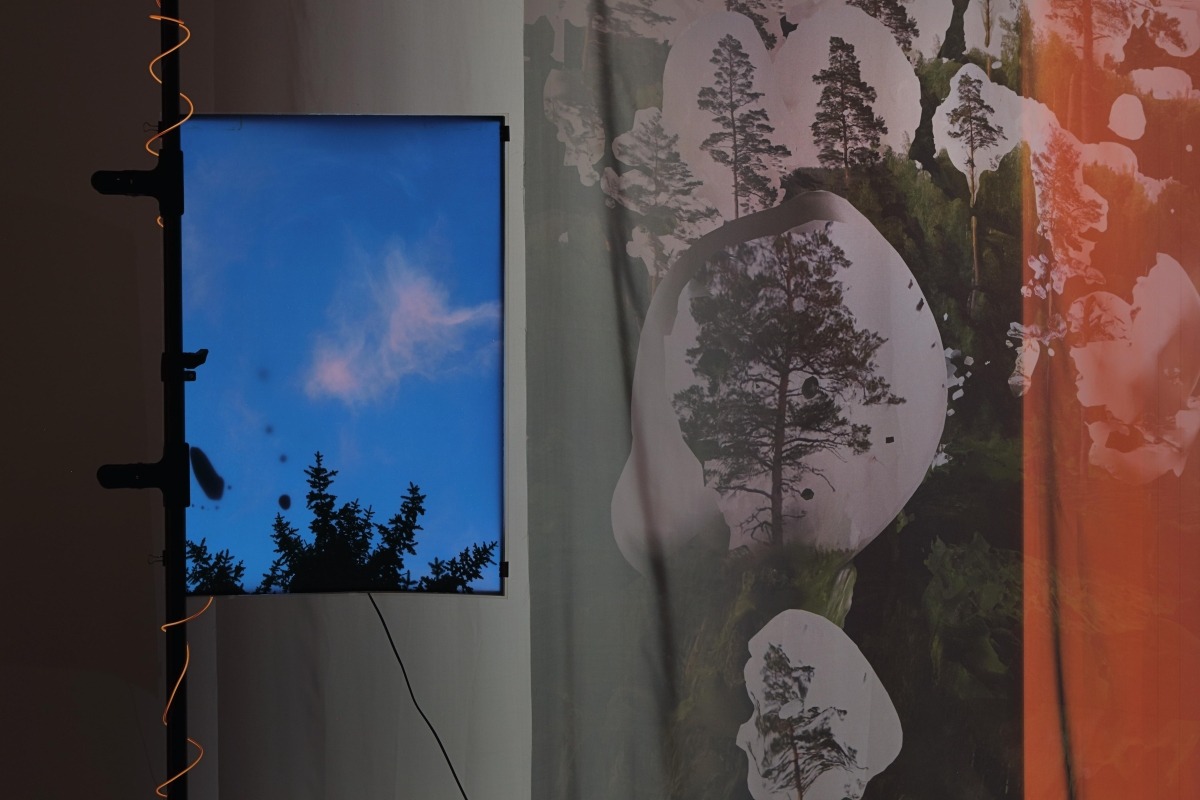

The fluid dynamic between mother and child extends beyond emotional and psychological realms. Scientifically, fetal cells have been documented to linger in the mother’s body long after pregnancy, sometimes even decades following childbirth. Conversely, maternal cells persist within the child’s blood and tissues for many years, becoming an intrinsic part of organs like the pancreas, heart, and skin. Fascinatingly, one study revealed that over half of adults carry maternal cells in their bloodstream. In some instances, cells from maternal grandmothers – acquired during the mother’s own gestation – can be transferred and detected within the fetus. This intricate cellular dance not only underscores the depth of biological bonds but also reinforces the artist’s vision of a universe where entities are more seamlessly connected than we often realize.

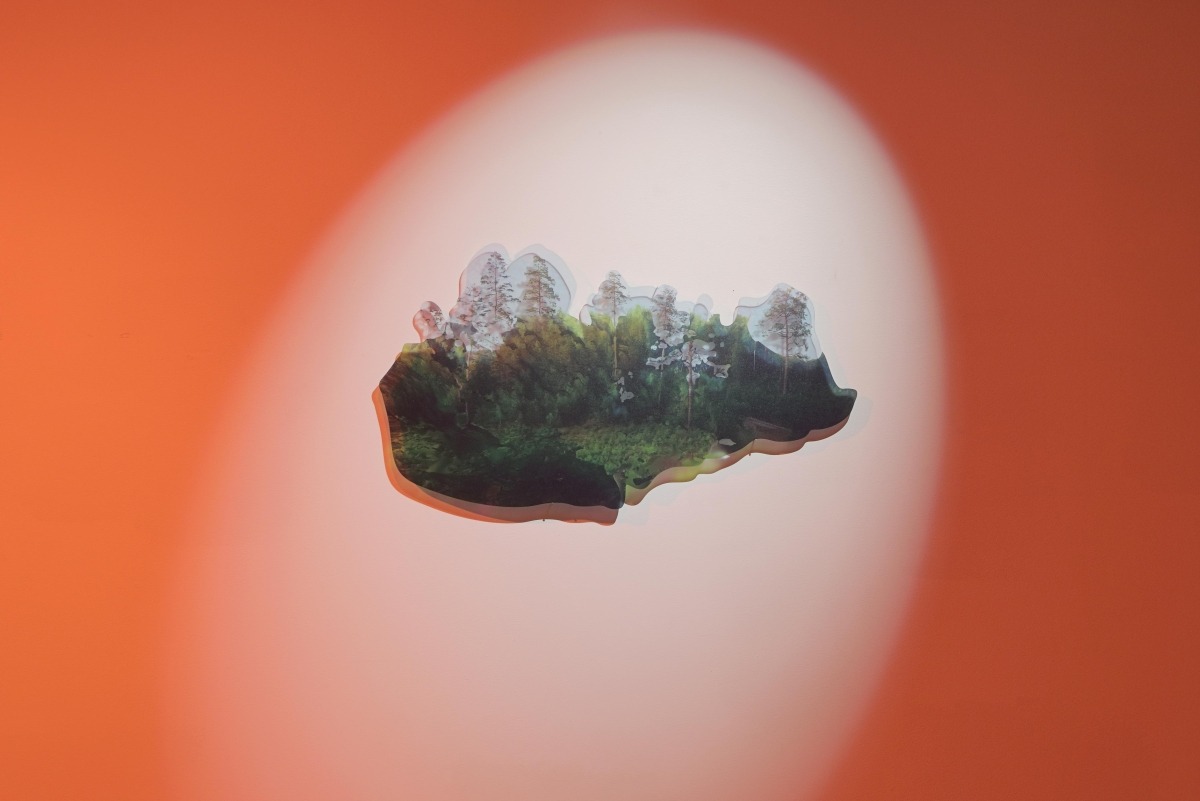
In the fourth chapter of the video piece, which serves as the centre piece of the exhibition, the artist seemingly provides instructions to those landing on a new planet. Simultaneously, these directions resonate as if guiding a newborn, welcoming them to this world. Each person’s perception crafts a distinct world existing solely for them. There exists a palpable longing for a gentler coexistence, a pressing need to safeguard nature. There’s an inclination toward a feminine energy in addressing the environmental crisis, hinting at the intrinsic connection between womanhood and the natural world.

In Kililiutė’s video piece, there’s also a moment where the spectator can hear a few lullabies. It’s as if the singer wishes to lull the planet to sleep and, in the process, find solace for herself. Throughout diverse cultures, lullabies often carry undertones of sadness. Researchers suggest that this melancholic thread might originate from the high infant mortality rates prevalent in bygone eras, coupled with a mother’s inherent fear of losing her child prematurely. In “Arctic Swell”, this universal sentiment resonates deeply, reflecting not only on the vulnerability of individual life but also on the fragility of our planet. The exhibition, while exploring intersections between climate change and nurturing, serves as a poignant lullaby for a distressed Earth, echoing ancient maternal fears in a contemporary context. Yet, to quote Dylan Thomas, “Do not go gentle into that good night”.